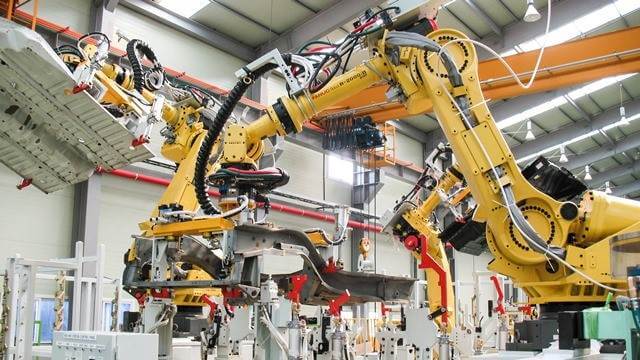One of the strongest reasons for supporting Lean manufacturing is because it is the prime source of leading edge management skills. Designing an aeroplane with millions of parts and assembling three thousand parts into an automobile every sixty seconds are still the some of the most complex management tasks in the economy. No surprise then that the retail industry and indeed our military have learnt how to manage complex logistics from manufacturing. And manufacturing and logistics also pose the biggest challenges to software systems designers.

Despite concerns about the offshore drift of manufacturing we still have some excellent examples of Lean manufacturing on our doorstep. One of the best things the UK government has done in recent years is to encourage other manufacturers in the UK to learn and emulate their success. There is no doubt that the Manufacturing Advisory Service has triggered awareness of how Lean thinking can improve the competitiveness of many smaller firms. There is still a lot to be done, and it would be a great mistake not to continue to support it.
However it is equally true that no manufacturer is an island. Every one is part of several extended value streams reaching from raw materials through distribution to the end customer. Lean thinking is about producing to customer demand, rather than to forecasts, right the way up the value stream, not just in each factory. Indeed the biggest challenge facing today’s manufacturers in no longer on the shop floor. It is in managing the orders up and down the value stream and streamlining all the processes in the office. Indeed in our experience the opportunities for improving office processes are even greater than on the shop floor.
In this regard manufacturing is no different from banks and insurance companies. It is therefore not surprising that financial services, healthcare, construction and even public services are all looking to manufacturing to learn about Lean thinking. Yes, Lean thinking has to be modified to suit the peculiarities of each of these sectors, as it has to for different kinds of manufacturing – from autos and aerospace to food and pharmaceuticals to custom designed machinery. However the Lean principles are the same, and many of the lessons about reconfiguring processes are too.
In this light maybe it is time to turn the Manufacturing Advisory Service into a Business Advisory Service, encouraging the spread of Lean thinking knowledge to all corners of the economy. You heard it here first! This might also go some way towards joined-up business support, rather than seeing MAS as a sop to keep lame-duck manufacturing happy.
To rise to this challenge, the excellent cadre of Lean experts recruited by MAS will need to deepen and broaden their skills and experience. Spending time helping small firms get started down the Lean path inevitably cramps their style and ends up focusing their efforts on applying tools as a wake up call to the true potential of Lean.
Lean thinking does not start with tools, but with the reasons for using them. It starts at a higher level by understanding real customer demand, not the amplified demand being passed up the value stream. And it entails fundamentally reconfiguring the physical flow of products through and beyond the plant. This takes real leadership and a systematic way to reorganise the information and product flows, plus all the supporting processes like production control, maintenance and training.
Toyota has been developing its Lean business system for 50 years. It is time we all moved into third gear. And it is time for manufacturers to help spread Lean thinking across the rest of the economy, in their own interest! A prosperous and competitive economy, not just manufacturing, is the key to their survival and growth over the next decade.